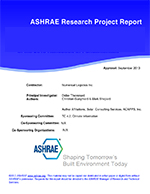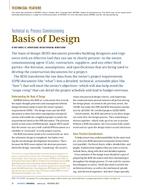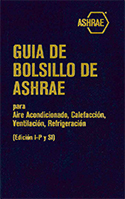Track: Systems and Equipment
Sponsor: 10.7 Commercial Food and Beverage Refrigeration Equipment, 10.3 Refrigerant Piping, Controls and Accessories
Chair: Shitong Zha, Member, Heatcraft, Stone Mountain, GA
Transitioning away from high global warming potential refrigerants has significantly affected system construction, arrangement and operation when traditional refrigerants are abandoned. This seminar explores how natural refrigerants like ammonia, propane and carbon dioxide are disrupting the status quo and what it means for designers, manufacturers and end users. Low-charge packaged ammonia systems have been used in commercial retail and HVAC applications. Propane is feasible as the sole refrigerant for supermarkets and carbon dioxide is spreading into hotter climates. Design considerations are also reviewed with respect to material compatibility and system architecture, as well as system operation and efficiency.
1. Micro-Distributed: A Simple Solution to Our Refrigerant Challenges
Tom Wolgamot, P.E., CPMP, Member, DC Engineering, Missoula, MT
There is significant pressure on the current refrigerant choices in the commercial sector due to their environmental impacts. There are several natural refrigerants which are environmentally benign and also have higher refrigerating capacities. These natural refrigerants each have challenges associated with them in the way of operating pressures, toxicity or flammability. Micro-Distributed systems manage these risks very effectively and while still providing a robust, simple to operate system. This presentation outlines the system architecture, efficiencies and benefits over currently applied systems and other natural refrigerant choices.
2. Low Charge Ammonia Chillers for Broad Applications
Caleb Nelson, P.E., Associate Member, Azane, Inc., Missoula, MT
There are several forces acting to shape ammonia into a more widely used refrigerant. Industrially, there is a need to increase safety and avoid regulation. Commercially, there’s a need for natural refrigerant solutions that can operate efficiently in hot climates without consuming water. Air-cooled, low-charge, packaged ammonia chillers developed over a decade ago have allowed ammonia to be used in much broader applications around the world. This presentation reviews the unique characteristics of an ammonia system that is fit for broad application. Consideration will be given to charge optimization, system reliability, efficiency sustainability, running costs and maintenance.
3. Piping Solutions for Natural Refrigerants
Chris Mueller, Associate Member, Mueller Industries, Memphis, TN
As refrigerant solutions have evolved, so have the demands on the piping systems. Industry standards are slow to change and often don’t address current system requirements. Copper piping are proven capable of supporting higher operating pressures than historically assumed. High-strength copper alloy piping has also been proven to support transcritical CO2 systems with UL ratings up to 1860 PSI – previously limited to steel piping. This presentation provides insight to the available solutions with a focus on compatibility, ratings, joints and transitions between various piping materials.
Presented: Monday, January 22, 2018, 2:15-3:45 PM
Run Time: 90 min.
This is a zip file that consists of PowerPoint slides synchronized with the audio-recording of the speaker (recorded presentation), PDF files of the slides, and audio only (mp3) for each presentation.
Citation: ASHRAE Seminar Recordings, 2018 Winter Conference, Chicago, IL
Product Details
- Published:
- 2018
- Units of Measure:
- Dual
- File Size:
- 1 file , 82 MB
- Product Code(s):
- D-CH18Sem31


